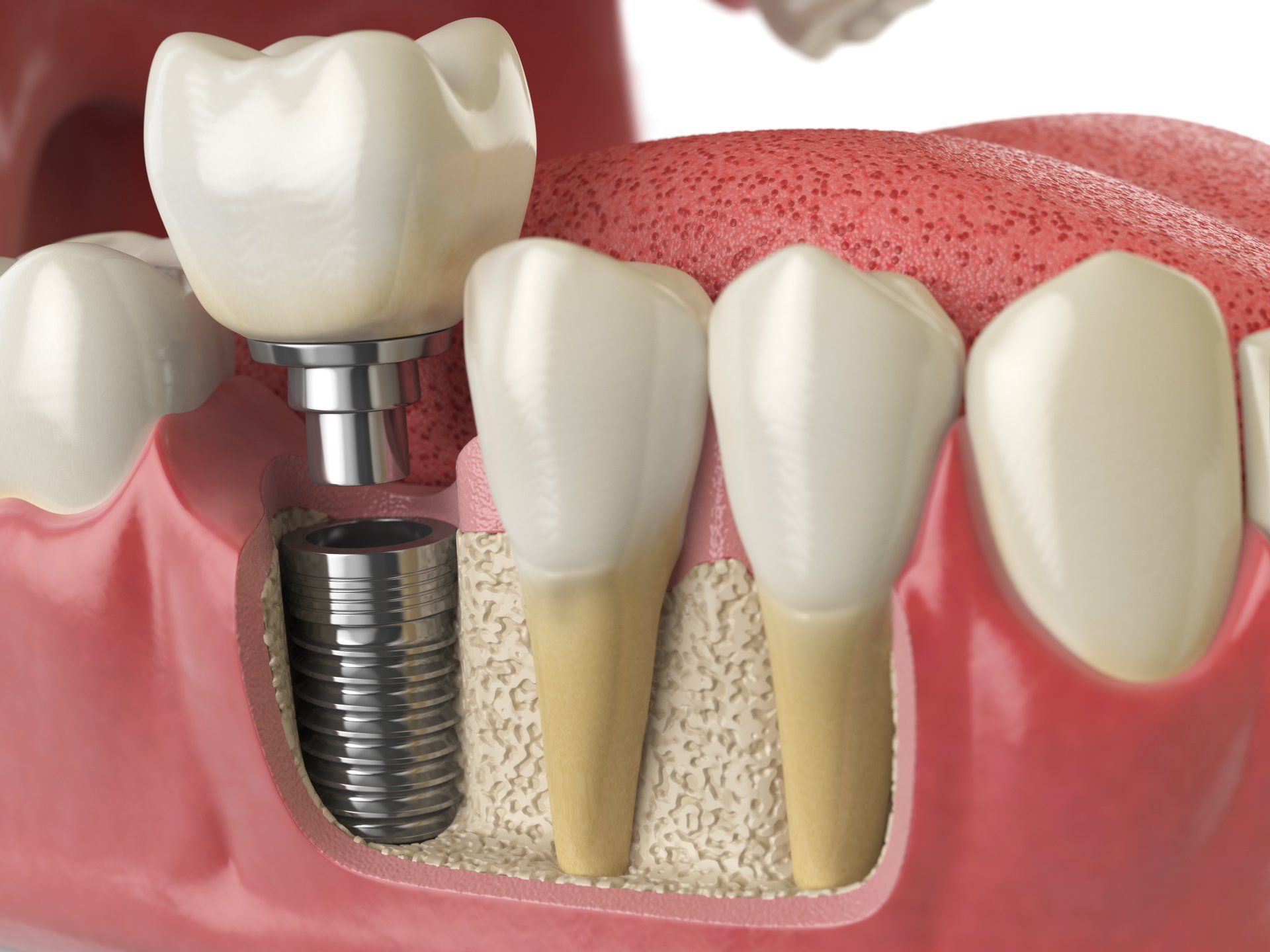IMPLANTS
A dental implant is a root replacement system that has a crown cemented onto it to replace a missing tooth or multiple missing teeth. These artificial roots are anchored in the bone beneath the gums where they become fused to the jaw. Many dentists and patients prefer dental implants because they offer the same function as natural teeth and also help prevent the jawbone from shrinking. Implants can also be used to help retain your complete dentures.


Did you know…
That approximately 30 million people live with no natural teeth in one or both jaws? But more and more dental patients are opting for dental implants as a means of tooth replacement. The American Academy of Implant Dentistry reports that 3 million people currently have dental implants – a number that is rapidly growing by about 500,000 per year. Modern titanium implants were first developed in the 1950’s, but Archeologists have determined that ancient Egyptians and Mayans were the first cultures to implant artificial teeth.
Frequently Asked Questions
Are dental implants right for me?
You may be a candidate for dental implants if you have missing, broken or severely decayed teeth. The best way of determining if implants are right for you is to have a consultation with Dr. Binninger. There are many factors to consider when evaluating patients for implants including height/thickness of bone in the area, available space between the teeth and your health history. We will take X-rays of the area and perform a clinical exam, along with taking into consideration your overall health to determine whether you are a good candidate for dental implants.
What should I expect if I decide to move forward with implant treatment?
The placement of dental implants is a multi-step process that typically takes between 6 and 9 months to complete. It begins with a surgical procedure during which a titanium screw is placed where a previous natural tooth root once was. The gums are closed over the implant, where is will stay for several months while it heals and begins fusing with the surrounding bone. At the conclusion of the healing period, you’ll return to be fitted for a permanent crown and have it placed.





